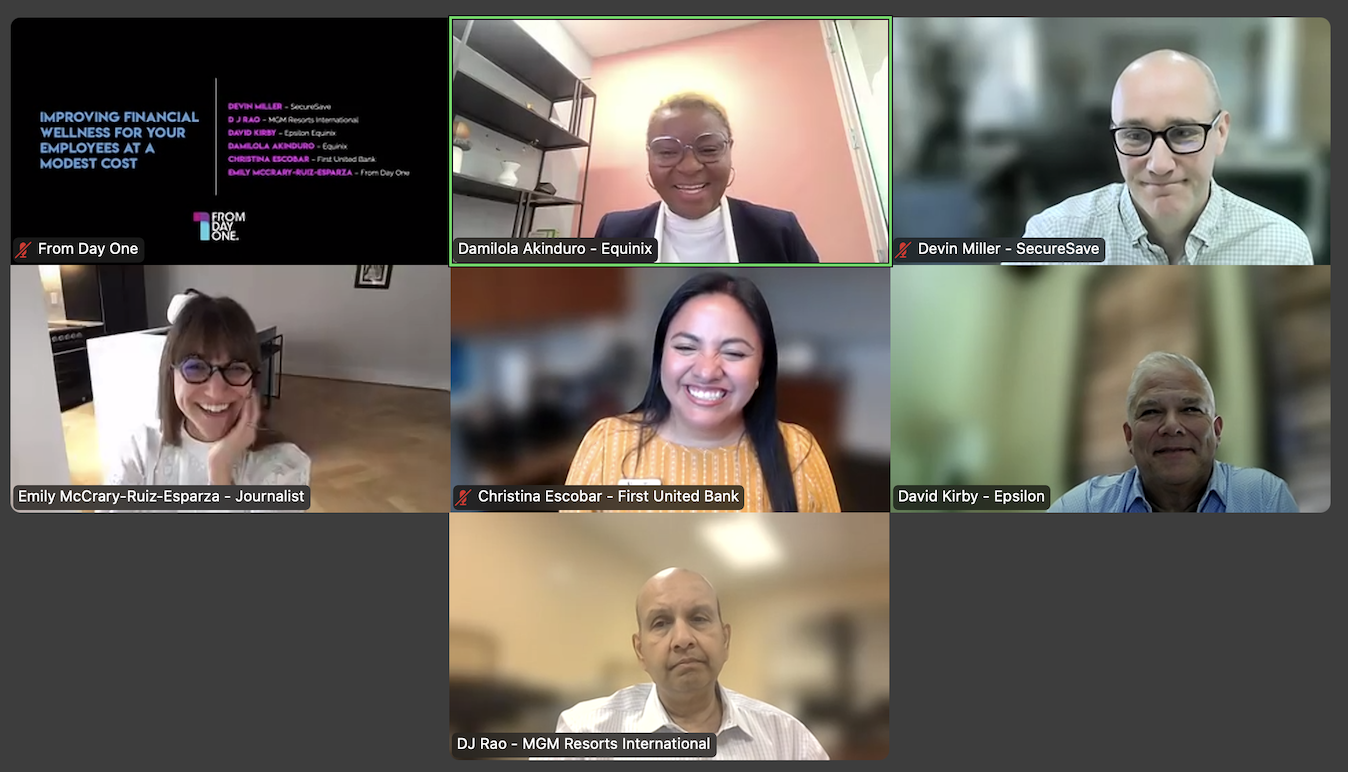Improving Financial Wellness for Your Employees at a Modest Cost


As inflation squeezes paychecks, student debt looms over graduates, and the cost of childcare keeps climbing, companies are under mounting pressure to help employees make the most of their money. But offering financial wellness programs isn’t just a nice-to-have. Employees now expected it–and it’s a strategic business move. The problem, however, is doing so cost-efficiently.
The first challenge is often getting executives, who make six- or seven-figure incomes, to understand the financial plights of salaried, and especially hourly, employees.
At MGM Resorts–famous for its gaming, hospitality, and entertainment venues–many leaders are what DJ Rao, the company’s head of total rewards, calls “homegrown.” They started with modest means. “They’ve grown from the front desk upwards into the C-suite. Our leadership appreciates and understands what $400 is,” he said during a recent From Day One webinar about improving employee financial wellness at a modest cost.
If your leaders don’t have this kind of appreciation, Rao emphasized that presenting programs as a moral imperative won’t be enough. HR leaders must benchmark against competitors in terms of ROI, reduced absenteeism, and increased productivity. Your leaders are concerned about the business, so translate it into dollars and cents. “It just cannot be, ‘Let’s do this because it’s good.’ You have to show the money.”
But how do you know if you’re delivering what your employees really need? Trade-off surveys are a helpful tool. Devin Miller, co-founder and CEO of emergency-savings platform SecureSave, recommends asking employees which benefits they actually want, rather than assuming the standard offerings will work.

“Everything’s costing more, and you want to add more, but do they really still need all of these things? And which one do they prefer over others?” Miller said. Some employees might prioritize emergency-savings accounts over health savings accounts or other perks entirely. Understanding these preferences ensures programs make a meaningful impact.
Financial resources don’t have to be expensive, and some don’t cost a thing. Damilola Akinduro, global head of benefits at the data-center company Equinix, points out that, without extra cash, employees often struggle to save. To help, Equinix helps its workers with tax efficiency and brings in volunteer experts for financial education. “You’d be surprised at how much employees appreciate these things,” she said.
First United Bank also leans on its internal resources. They invite specialists from within the bank to host talks about budgeting, and have their 401(k) provider give free seminars, said Christina Escobar, a senior financial well-being specialist at First United. “We really try to leverage our vendors and our internal resources.” These resources are especially helpful for their new grads (they hire 100 to 200 every year), who may have never followed a budget or set up a retirement account.
Vendors themselves are evolving to make financial benefits more cost-effective. Dave Kirby, SVP of total rewards at marketing data company Epsilon, noted that platform-style solutions now allow companies to consolidate things like charitable giving, wellness programs, and financial literacy offerings in one place, making it easier to scale benefits efficiently. “There are now vendors that are bringing all this together under one platform,” he said.
Over time, employers may need to reevaluate their offerings. “It’s surprising how few employers take the time to go through these programs, ask the hard questions, and pull that money back,” Miller said. Many companies can fund improvements by reallocating underused benefits rather than increasing budgets.
Rao warned against chasing wellness trends. “Everyone wants to do something new, but be very careful what you offer your employees,” lest you have to roll it back. He recommends investing fully in a few initiatives and communicating widely—through word of mouth, employee resource groups (ERGs), signage, and internal websites. “Do few things,” Rao said, “but do them well.”
Emily McCrary-Ruiz-Esparza is an independent journalist and From Day One contributing editor who writes about business and the world of work. Her work has appeared in the Economist, the BBC, The Washington Post, Inc., and Business Insider, among others. She is the recipient of a Virginia Press Association award for business and financial journalism. She is the host of How to Be Anything, the podcast about people with unusual jobs.
(Featured photo by LordHenryVoton/iStock by Getty Images)
The From Day One Newsletter is a monthly roundup of articles, features, and editorials on innovative ways for companies to forge stronger relationships with their employees, customers, and communities.